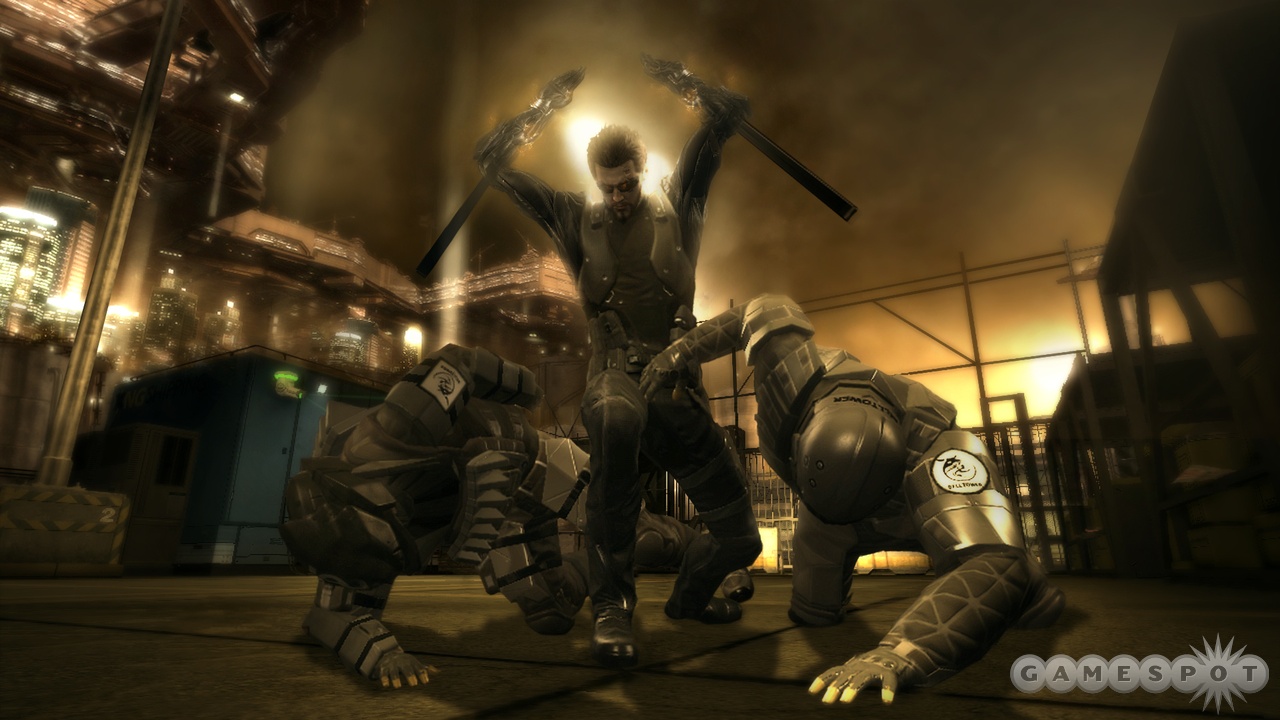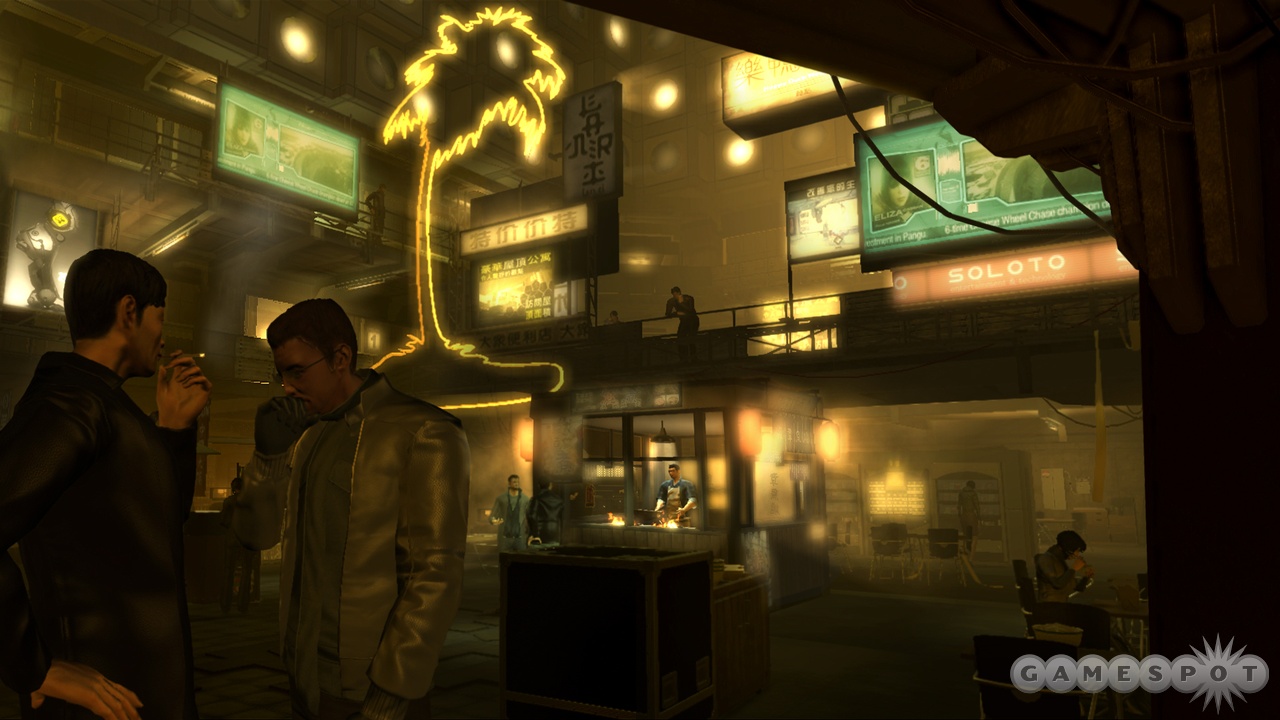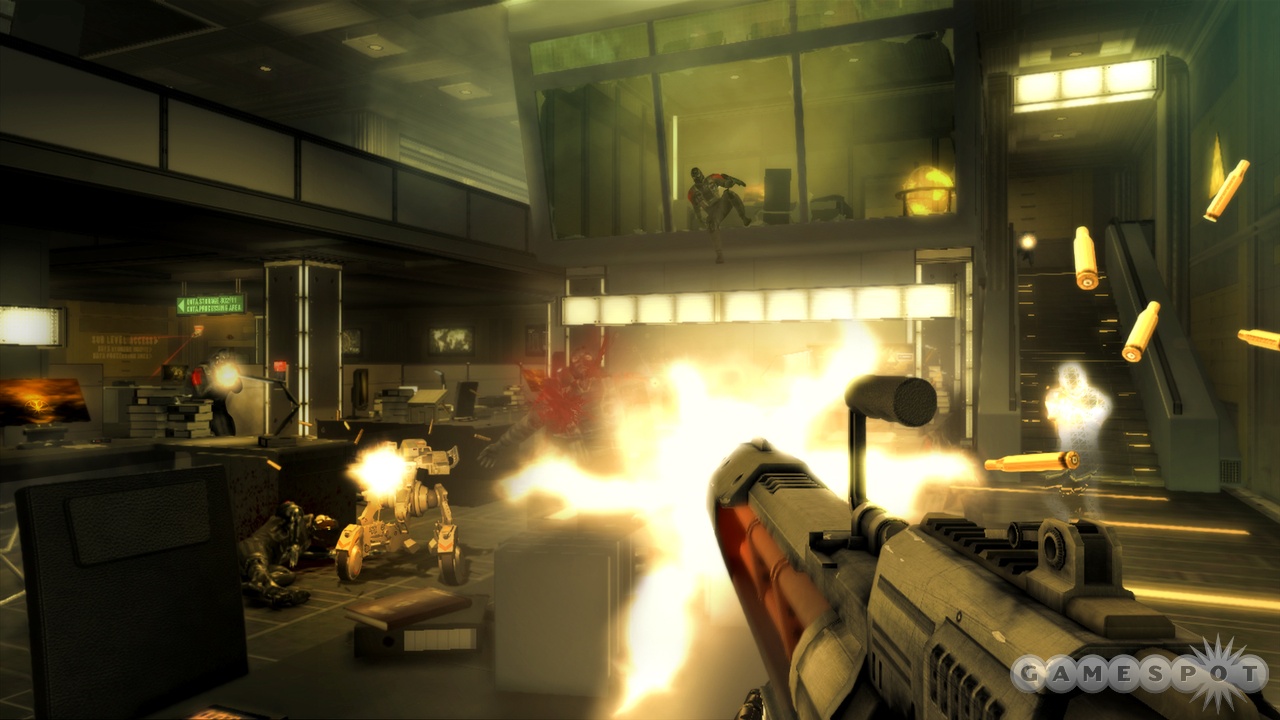Deus Ex: Human Revolution Extended Hands-On Preview, Part Two
Now that we know about Adam Jensen the human being, let's learn about Adam Jensen the augmented killing machine.
A few weeks ago, Square Enix and Eidos Montreal were kind enough to let us play through the first three or so hours of Deus Ex: Human Revolution. We brought you our impressions of the pre-credits prologue not long after that, and now, we're back to give you a little more detail on what happens after the title fades and the game's conspiracy starts to build. Be sure to read part one for all the necessary context of what we're about to explain. Go ahead, we'll wait for you. Done? Then, let's get started.

Adam Jensen is in an awkward position leading into the first proper mission of this new Deus Ex. Having been left for dead and subsequently rescued using biomechanical augmentations that he was never fully intent on getting, Jensen simply isn't the guy he once was--not by a long shot. In fact, the game is pretty clever about how Jensen stumbles into life with augmentations. When he returns to work doing private security for Sarif Industries six months after the events that threatened his life, you see a flickering and illegible heads-up display as you're walking into the office. Why's that? He's still getting used to his new retinal display augmentation. But, on the plus side, he's also got retractable sunglasses that pop out of his head on command. So that's a bonus.
A quick walk-through of the offices of Sarif Industries reaffirms one of the lessons we learned from the last preview we posted: the atmosphere in Human Revolution is so fantastic that even a simple stroll through a corporate workplace can feel intense and stylish. It's a world done up in vibrant shades of gold and black, like the sun is constantly setting. This is an ominous metaphor, perhaps, for the impending fate of humanity at which so much of the game's story hints. But the gameworld isn't all art-house pretentiousness. In a wink toward developer Eidos Montreal's parent company Square Enix, you'll encounter a fellow named Pritchard who seems to be a big Japanese role-playing game fan; so much so that he's got a poster for Final Fantasy XXVII on his office wall. (Hey, it is 2027 after all.)
Unfortunately, Jensen finds that there's no rest for the weary when the boss man Sarif fills him in on the details of this first mission. A group of activists have broken into one of Sarif's warehouses, and because this happens to be the same warehouse that contains an extremely sensitive military prototype, it's not a job for the police. It's a job for private security, also known as you. What makes this mission especially tricky is that these activists are anti-augmentation activists known as Purity First, so it's not as though the newly mechanized Adam Jensen can just walk up and offer them an olive branch. No, not when it's a carbon fiber olive branch that extends out of Jensen's robot arm on a telescoping rod.

On the helicopter ride to the warehouse, you're able to chat with Sarif and get better idea of what's about to go down. The boss lets you know that it's entirely up to you to decide whether you want to use lethal or nonlethal means. The conversation system plays out like most Western role-playing games, with a list of options to choose from at certain breaks in the dialogue. Using this conversation system, we informed Sarif that we intended to approach the situation using nonlethal tactics. He then told us what to expect from the warehouse's layout and asked whether we'd prefer to go with the long-range tranquilizer rifle or the short-range stun gun. Rifle, please.
Once on the ground, we got our first taste of the augmentations upgrade menu (not to mention a few catty SWAT officers who called the newly augmented Jensen a "can opener"). This screen is what takes Human Revolution from a first-person shooter with a branching dialogue system and drops it more firmly into the realm of action role-playing games. As you progress through the game, you'll earn what are called praxis points, which is the currency you use to purchase augmentations. Whichever path you choose to pursue, these upgrade trees effectively determine how you're going to play the game, whether it's as a run-and-gun supersoldier, a stealthy ninja, a chatty wordsmith, or some variation.
For this mission, we decided to take the stealthy approach. We had enough points for three augmentations, so here's what we went with: smart vision to see enemies through walls; cloaking system to temporarily become, if not invisible, then at least very hard to see; and stealth enhancer to see enemy positions on the minimap. (We would later gather enough praxis points to upgrade stealth enhancer to level two to see enemy cones of vision on the map, all Metal Gear Solid style.) We used this suite of upgrades to terrorize those poor Purity First saps like a ghost in the shadows. Much of this was thanks to the fact that level layout in Human Revolution gives you a lot of options for how to take on enemies. Carrying on the legacy of the original Deus Ex, there's an abundance of spacious air ducts, catwalks, and off-the-beaten-path routes to let you traverse through buildings with ease, so long as you've got the patience to learn enemy guard routes and linger in the shadows for long enough to make your move.
We started by sneaking past a trio of guards watching over the entrance to the warehouse simply by sticking to the shadows and hiding behind stacks of crates. Then, we got inside and climbed up to the top of a 20-foot storage shelf, which we used as a sniper's nest to drop each and every one of the half-dozen enemies patrolling within. Had we not cleared the room out, we would have needed to drag those unconscious bodies into the shadows so as not to give away our presence. Much like the first game, the pressure is on you to survey the environment and shuffle things around to best suit your needs. Whether that's hiding a body in the shadows, moving a stack of crates to reveal an alternate air-duct pathway, or simply knowing which way a door swings open so that you can remain hidden when an enemy walks into a room, Human Revolution is a game that rewards a keen eye. Likewise, you learn a lot about the story by keeping a close eye on the environment because you can find notepads and news tablets that give context for the story. And, naturally, you can also find pass codes for locked doorways by snooping through discarded notes and computers with e-mail left accessible. In other words, this is a Deus Ex game through and through.
Overall, we were quite impressed with how intuitive the stealth elements were and how smoothly the game played. The only issue we had was with the power gauge. Each skill, including cloaking and seeing through walls, uses up a portion of your overall power gauge, which you can think of as Jensen's internal batteries. And that makes sense: These are special technologies that require power to use. But sneaking up behind an enemy and performing a stealth takedown on him is also one of the things that consumes power, even though you're often just giving him a good old-fashioned judo chop to the neck. The only way to fully replenish these power cells is to find consumables scattered about, such as energy bars. The whole thing feels a little contrived--you can only smash a dude in the back of the head if you've got a granola bar in your belly--and winds up throwing off the pacing of a sneaky trek through enemy territory. It's a system that takes the universal last defense of the first-person shooter game--the melee attack--and removes its usefulness as a desperation move.

Of course, Deus Ex: Human Revolution is still a ways off and design elements like that are things that could easily be fine-tuned in the months ahead. All in all, things are looking great. We won't spoil the story outcome of this first mission, but suffice it to say that after all the engaging in stealth and dragging of bodies, you reach a point where the only weapon you have is your mind and your choice of words--and it's a conversation with at least one life on the line that carries a lasting impact throughout the story. We're excited to see more of this story in the upcoming months as we get closer to Human Revolution's release later this year.
Got a news tip or want to contact us directly? Email news@gamespot.com
Join the conversation